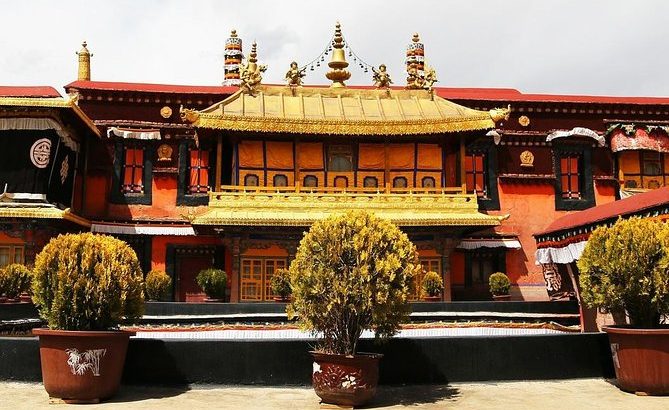The planning of a trip to Nepal and Tibet can be accomplished by two different ways. Are you going between Nepal through Tibet and vice versa? Or do you go to Tibet back to Nepal? Which is the better route to travel? We suggest the route that connects Tibet to Nepal instead of the reverse route for the best option to follow.
Tibet through Nepal Tour
One of the most important factors to consider when looking to embark on an overland journey in the Tibetan plateau is the time. In addition, the journey overland between Nepal to Tibet will take more duration than the trip to Tibet towards Nepal.
If you’re thinking of beginning your journey in Nepal and then traveling via land to Tibet and Tibet, then you’ll require an additional 3 to 5 days for the trip. It is at minimum three days to get the entry visa needed to go in to Tibet in Nepal. This Chinese Group Visa can only be issued after you arrive in Kathmandu because it requires your passport’s original form and can take up to three working days for processing. The visa must be requested through your travel agent. That means instead of rushing off to Tibet when you get to Nepal you must be patient for at least three working days prior to your departure on the plateau.
Sickness and Altitude
The highest region on Earth, Tibet Autonomous Region has an average altitude of 4,500m. But, Nepal, which neighbors Tibet close, is the lowest altitude. If you travel between Kathmandu to Lhasa it is possible to experience an abrupt increase in altitude throughout the journey. This means the chance of suffering from altitude sickness increases because of the rapid ascent upon entering the Tibetan plateaus from Nepal.
Tourists are able to enter Tibet via Nepal through Gyirong Port, and go further into Tibet via Gyirong County which is about 100 km away from the harbor. While Kathmandu is located at 1400 meters in altitude, Gyirong Port lies at an elevation of 1,850 meters. Gyirong Town, which is just 25km of the Port has elevated to 2,700m higher than sea-level. The majority of Kathmandu is the first stop on Tibet tours include an overnight stay here prior to heading towards EBC and Kailash by Gyirong County which stands 4,200 meters above sea level and is about 70km distant from Gyirong Town.
If you’re traveling to Everest Base Camp on the Nepal tour, from Tibet tour, there’s an increase of 2,700m without the need for a full day to get used to. When you leave Gyirong Town, you ascend quickly through the Gyirong Valley to more than 4000 meters in only 70 km of driving and then drive straight to EBC with 5,200m elevation. You will then travel over Gawula Pass (5,211m) back before arriving at Tingri (4348m) then spend the over night there. In the days to come you’ll pass Gyatsola Pass (5,248m) and Tsola Pass (4,600m) on the route up to Shigatse (3,900m) as well as ascend over Simila Mountain Pass (5,150m) and Gampala Pass (4,998m) on the journey between Gyantse (3,977m) up to Lhasa.
If you are traveling to Kailash from Nepal and after leaving Gyirong Port, you will travel through Zhongba County (4,772m) via Gyirong County and stay overnight there, before making your way towards Lake Manasarovar at 4,590m and Darchen at 475 meters.However should you be traveling through Tibet to Nepal and back, you will have plenty of time to adjust to the elevation change from EBC as well as Mt. Kailash. Once you reach Lhasa it is possible to adjust to the higher elevation for a few days, before moving out over the plateau. This is crucial in the journey from Tibet to Nepal in the sense that you’ll rise to altitudes of more than 5,000 metres at different spots throughout the region.
After you leave Lhasa After leaving Lhasa, you will travel through Gyantse (3,977m) as well as Shigatse (3,900m) then spend the night there in order to climb slowly. After that, you’ll be able to reach Tingri at 4,390m before arriving at EBC at 4,390 meters. From EBC the journey is downhill until Kathmandu making the journey easier in terms of elevation.
Nepal up to Tibet for a night at EBC
If you are traveling across Lhasa to Kathmandu since you’re well-acclimatized at high altitudes prior to leaving Lhasa it is also possible to get more used to the altitude when you travel by land and gradually ascend until you get to EBC. That means that since you will be well-acclimatized at the time you arrive there, you are able to spend the night at EBC which is the base camp located at the base of the world’s tallest mountain. This will allow you to capture some stunning sunrise and sunset photos of the glowing orange light on the mountain’s slopes. Also, you can see the many stars visible at this height as well as all of the stars in our galaxy which is that is, the Milky Way. You can also stay in a traditional tent of nomads at the well-known tent guesthouses.When travelling across Kathmandu to Lhasa it is not possible to get the additional days needed to adjust to higher altitudes. This means you will not be able to stay overnight in the camp at base. Instead, you’ll leave from Gyirong and travel towards the camp and leaving later in the afternoon, stopping for the night at Tingri in the route to Shigatse. This means you are missing out on one of the most exciting aspects of an excursion to EBC.


